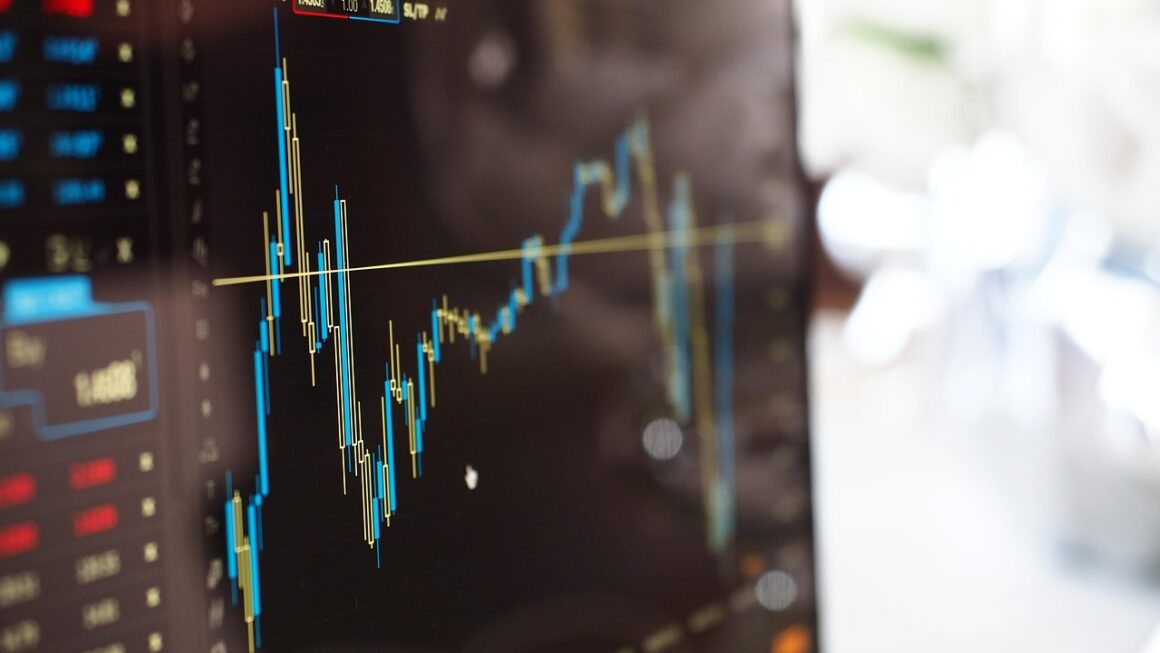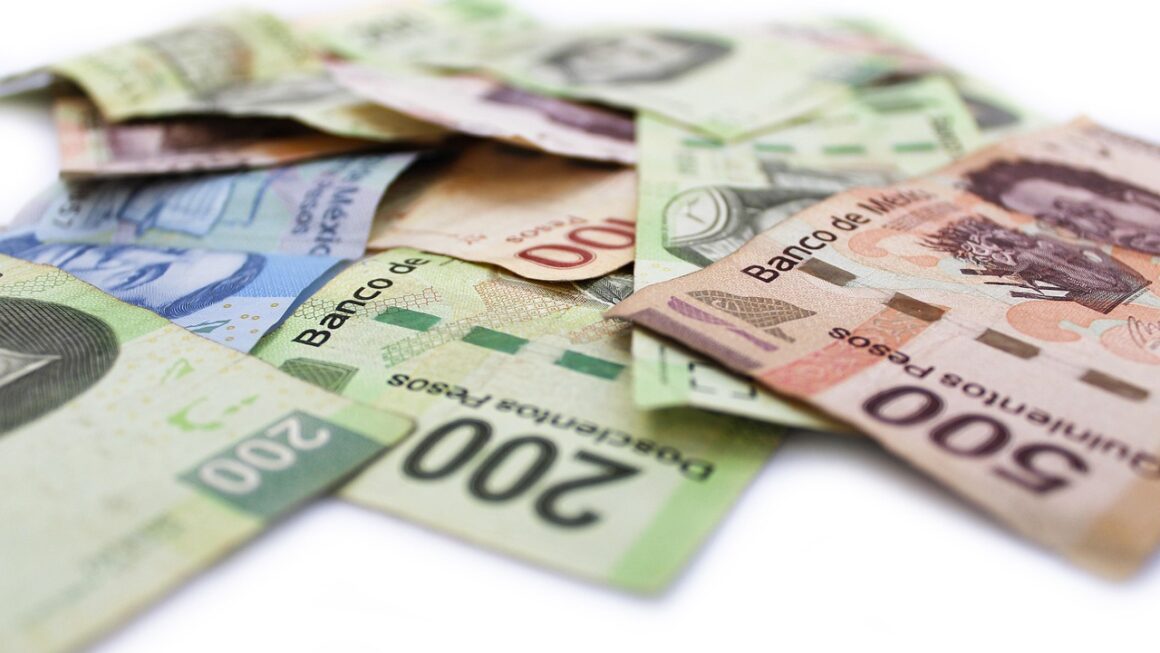Forex trading, or foreign exchange trading, can seem like a daunting world of complex charts and volatile markets. However, at its core, it’s a relatively simple concept: exchanging one currency for another with the aim of profiting from the fluctuations in their exchange rates. Whether you’re a seasoned investor or just starting to explore potential investment opportunities, understanding the fundamentals of forex trading is crucial for making informed decisions. This guide will break down the essentials, from the basics of currency pairs to risk management strategies, offering a clear pathway to navigate this exciting market.
Understanding the Forex Market
The foreign exchange market is the largest and most liquid financial market in the world, with trillions of dollars changing hands every day. Unlike stock exchanges, the forex market is decentralized, operating 24 hours a day, five days a week. This continuous trading creates opportunities and challenges for traders.
What is Forex Trading?
Forex trading involves buying one currency and simultaneously selling another. Currencies are always traded in pairs, reflecting the relative value of one currency compared to the other.
- Currency Pairs: Forex trading always involves currency pairs. The first currency listed is the “base currency,” and the second is the “quote currency.” For instance, in EUR/USD, the euro (EUR) is the base currency, and the US dollar (USD) is the quote currency. The price shows how many US dollars are needed to buy one euro.
- Going Long vs. Going Short: If you believe the base currency will increase in value relative to the quote currency, you “go long” (buy) the pair. Conversely, if you believe the base currency will decrease in value, you “go short” (sell) the pair.
- Example: Let’s say the EUR/USD exchange rate is 1.1000. If you believe the euro will appreciate against the dollar, you would buy EUR/USD. If the rate then increases to 1.1100, you could sell the pair and make a profit of $0.01 per euro traded.
Key Participants in the Forex Market
The forex market is driven by a diverse range of participants, each playing a crucial role in its functioning.
- Central Banks: These institutions influence their country’s currency value through monetary policy. For example, the Federal Reserve in the United States can raise or lower interest rates, impacting the value of the US dollar.
- Commercial Banks: Major banks are significant players, conducting large-scale currency transactions for clients and their own trading desks.
- Corporations: Businesses involved in international trade need to exchange currencies to pay for goods and services or repatriate profits.
- Hedge Funds and Investment Managers: These entities trade currencies to generate returns for their clients and investors.
- Retail Traders: Individual traders, like you, participate in the market through online brokers, seeking to profit from currency movements.
Major, Minor, and Exotic Currency Pairs
Currency pairs are categorized based on their trading volume and economic significance.
- Major Pairs: These pairs involve the US dollar and are the most liquid, often having the tightest spreads (the difference between the buy and sell price). Examples include EUR/USD, USD/JPY, GBP/USD, and USD/CHF.
- Minor Pairs: Also known as cross-currency pairs, these pairs do not involve the US dollar but are still widely traded. Examples include EUR/GBP, EUR/JPY, and GBP/JPY.
- Exotic Pairs: These pairs involve a major currency and a currency from an emerging market. They are less liquid and have wider spreads, making them riskier to trade. Examples include USD/TRY (US dollar/Turkish lira) and EUR/ZAR (Euro/South African rand).
Forex Trading Mechanics: How It Works
Understanding the mechanics of forex trading is crucial for executing successful trades. This involves grasping concepts like leverage, margin, pips, and spreads.
Leverage and Margin
Leverage allows traders to control a larger position with a smaller amount of capital. Margin is the amount of money required in your account to maintain a leveraged position.
- Leverage: Brokers offer leverage, often expressed as a ratio (e.g., 50:1, 100:1, or even higher). For instance, with a leverage of 100:1, you can control a $100,000 position with just $1,000 of your own capital.
- Margin Call: If your trading position moves against you, your broker might issue a margin call, requiring you to deposit additional funds to cover potential losses. Failure to do so can result in the broker closing your position.
- Example: If you have $1,000 in your account and use a leverage of 100:1, you can control a position worth $100,000. However, even a small percentage loss in the market can significantly impact your initial investment.
Pips and Spreads
Pips (percentage in point) are the standard unit of measurement for currency movements. Spreads represent the cost of trading.
- Pip: A pip is usually the fourth decimal place in an exchange rate (e.g., 0.0001). For USD/JPY pairs, a pip is typically the second decimal place (e.g., 0.01).
- Spread: The spread is the difference between the “bid” (the price at which you can sell) and the “ask” (the price at which you can buy) price. A narrower spread means lower transaction costs.
- Example: If the EUR/USD bid price is 1.1000 and the ask price is 1.1002, the spread is 2 pips.
Order Types
Different order types allow traders to manage their positions effectively.
- Market Order: An order to buy or sell at the current market price.
- Limit Order: An order to buy below the current market price or sell above it.
- Stop-Loss Order: An order to close a position if the price reaches a specified level, limiting potential losses.
- Take-Profit Order: An order to close a position when the price reaches a desired profit level.
- Example: You buy EUR/USD at 1.1000. You can set a stop-loss order at 1.0980 to limit your loss to 20 pips and a take-profit order at 1.1050 to capture a profit of 50 pips.
Analyzing the Forex Market
Successful forex trading requires a combination of technical and fundamental analysis.
Technical Analysis
Technical analysis involves studying historical price data to identify patterns and predict future price movements.
- Chart Patterns: Common chart patterns include head and shoulders, double tops/bottoms, and triangles.
- Technical Indicators: These are mathematical calculations based on price and volume data, used to generate trading signals. Examples include Moving Averages, RSI (Relative Strength Index), and MACD (Moving Average Convergence Divergence).
- Trend Lines: Drawing trend lines helps identify the direction of the market and potential support and resistance levels.
- Example: A trader might use a 50-day moving average and a 200-day moving average. If the 50-day moving average crosses above the 200-day moving average, it could be seen as a bullish signal.
Fundamental Analysis
Fundamental analysis involves evaluating economic, political, and social factors that can influence currency values.
- Economic Indicators: Key economic indicators include GDP growth, inflation rates, interest rates, unemployment figures, and trade balances.
- Political Events: Political instability, elections, and policy changes can significantly impact currency values.
- Central Bank Announcements: Statements from central banks regarding monetary policy are closely watched by forex traders.
- Example: A surprise interest rate hike by a central bank can cause the country’s currency to appreciate. Similarly, a negative GDP report might weaken the currency.
Combining Technical and Fundamental Analysis
Often, the most effective trading strategies involve combining both technical and fundamental analysis to get a more comprehensive view of the market.
- Confirming Signals: Use fundamental analysis to confirm signals generated by technical indicators.
- Anticipating Market Moves: Use fundamental analysis to anticipate potential market moves and then use technical analysis to find optimal entry and exit points.
- Example: If fundamental analysis suggests that a currency is undervalued, a trader might wait for a bullish signal from a technical indicator before entering a long position.
Risk Management Strategies
Effective risk management is crucial for protecting your capital and achieving long-term success in forex trading.
Setting Stop-Loss Orders
Using stop-loss orders is a fundamental risk management technique.
- Fixed Percentage Stop-Loss: Risk a fixed percentage of your capital on each trade. For example, risking 1% or 2% of your account balance.
- Technical Stop-Loss: Place your stop-loss order based on technical levels, such as support and resistance areas or previous swing lows/highs.
- Example: If you have a $10,000 account and are risking 1% per trade, your maximum loss on any single trade should be $100.
Position Sizing
Determining the appropriate position size is essential to manage risk effectively.
- Calculate Position Size: Use a position size calculator to determine the appropriate amount of currency to trade based on your risk tolerance and the distance to your stop-loss order.
- Avoid Over-Leveraging: Be conservative with leverage and avoid over-leveraging your account.
- Example: If your stop-loss order is 50 pips away and you are risking 1% of your $10,000 account ($100), you can calculate the appropriate lot size to ensure you don’t lose more than $100 if the trade goes against you.
Maintaining a Risk-Reward Ratio
Aim for trades with a favorable risk-reward ratio, typically at least 1:2 or 1:3.
- Assess Potential Profit: Ensure that the potential profit from a trade is at least twice the amount you are risking. This means if you risk 20 pips, you should aim for a profit of at least 40 pips.
- Adjust Based on Market Conditions: Adapt your risk-reward ratio based on market volatility and your trading strategy.
- Example: If you are risking 30 pips on a trade, your take-profit order should be at least 60 pips away to achieve a 1:2 risk-reward ratio.
Choosing a Forex Broker and Platform
Selecting the right forex broker and trading platform is a critical decision.
Factors to Consider When Choosing a Broker
- Regulation: Ensure the broker is regulated by a reputable financial authority, such as the FCA (UK), ASIC (Australia), or CySEC (Cyprus).
- Spreads and Commissions: Compare spreads and commissions offered by different brokers to minimize trading costs.
- Leverage: Check the leverage options available and ensure they align with your risk tolerance.
- Trading Platform: Evaluate the trading platform’s features, user-friendliness, and compatibility with your devices.
- Customer Support: Look for brokers that offer reliable and responsive customer support.
- Deposit and Withdrawal Options: Verify the available deposit and withdrawal methods and associated fees.
Popular Trading Platforms
- MetaTrader 4 (MT4): A widely used platform known for its customizability, automated trading capabilities (Expert Advisors), and extensive charting tools.
- MetaTrader 5 (MT5): An advanced platform with more features and capabilities than MT4, including support for multiple asset classes.
- cTrader: A platform known for its depth of market analysis, order execution speed, and transparency.
Demo Accounts
Before trading with real money, practice using a demo account.
- Simulated Trading: Demo accounts allow you to trade with virtual money, simulating real market conditions.
- Test Strategies: Use a demo account to test different trading strategies and familiarize yourself with the trading platform without risking your capital.
- Risk-Free Learning: Demo accounts provide a risk-free environment to learn the basics of forex trading and refine your skills.
Conclusion
Forex trading offers exciting opportunities for those willing to learn and adapt. By understanding the fundamentals of currency pairs, market analysis techniques, risk management strategies, and platform selection, you can build a solid foundation for success. Remember that consistent learning, disciplined risk management, and a patient approach are essential for navigating the complexities of the forex market and achieving your financial goals. Always start with a demo account and gradually transition to real trading as your skills and confidence grow. Good luck!




